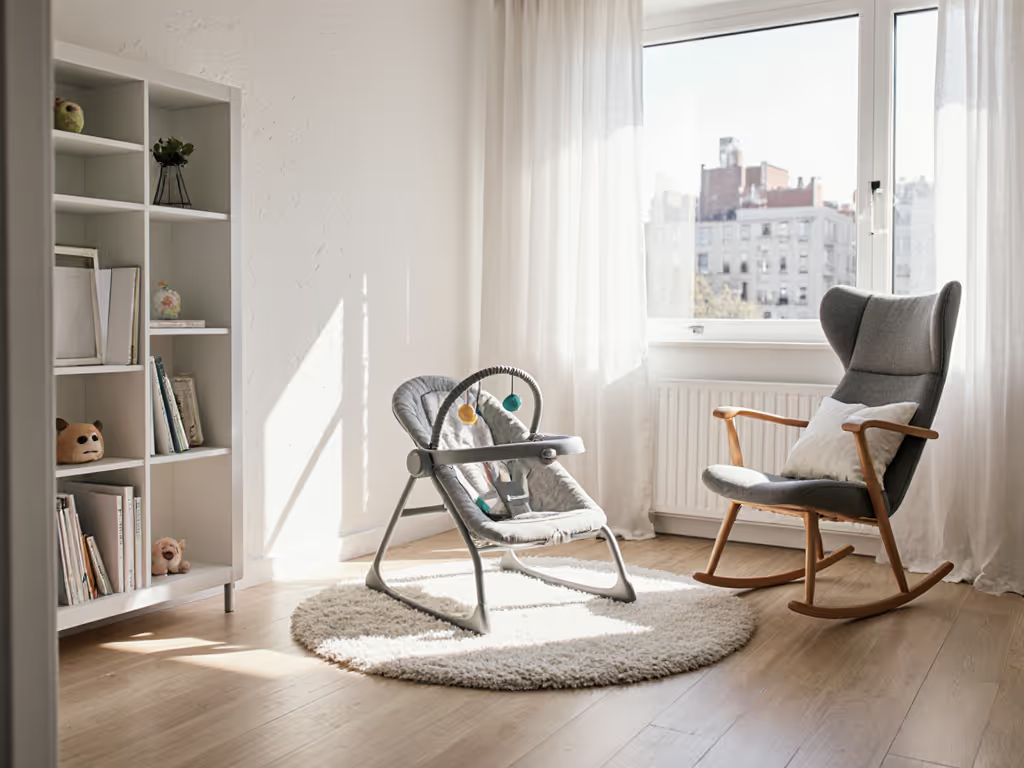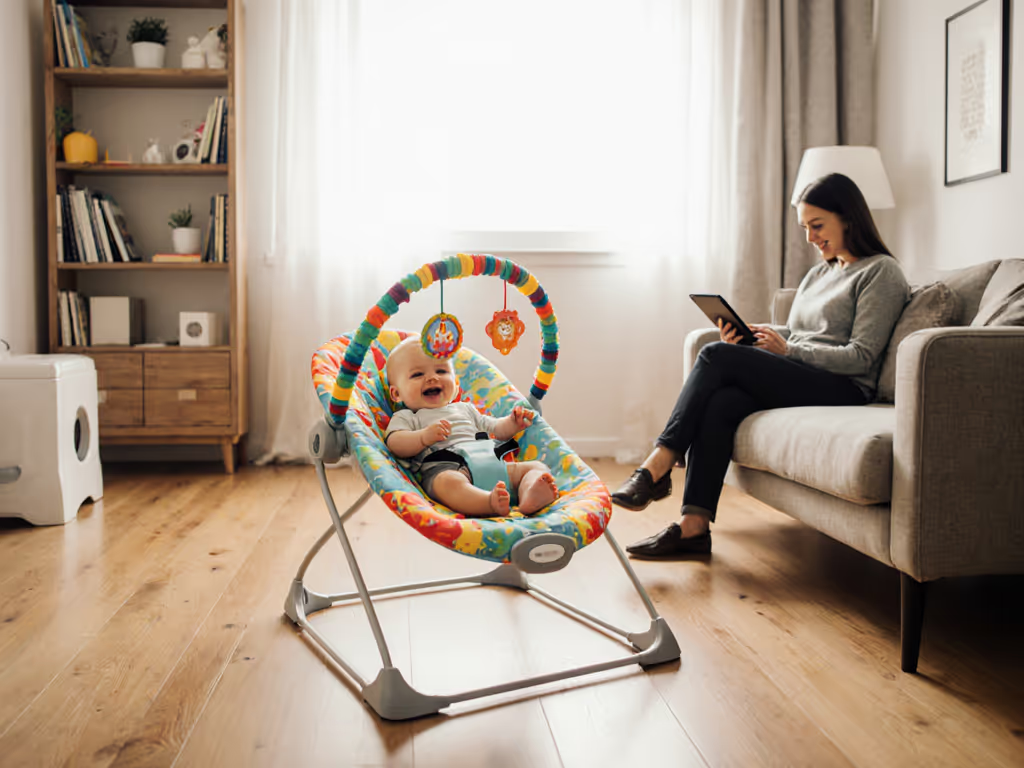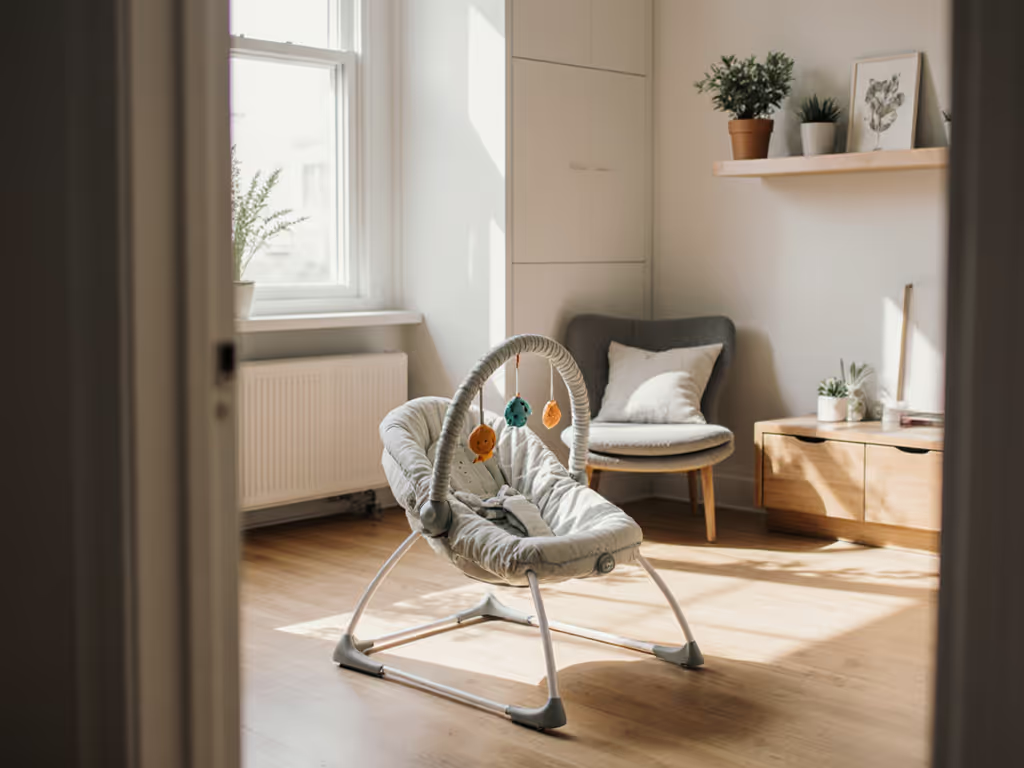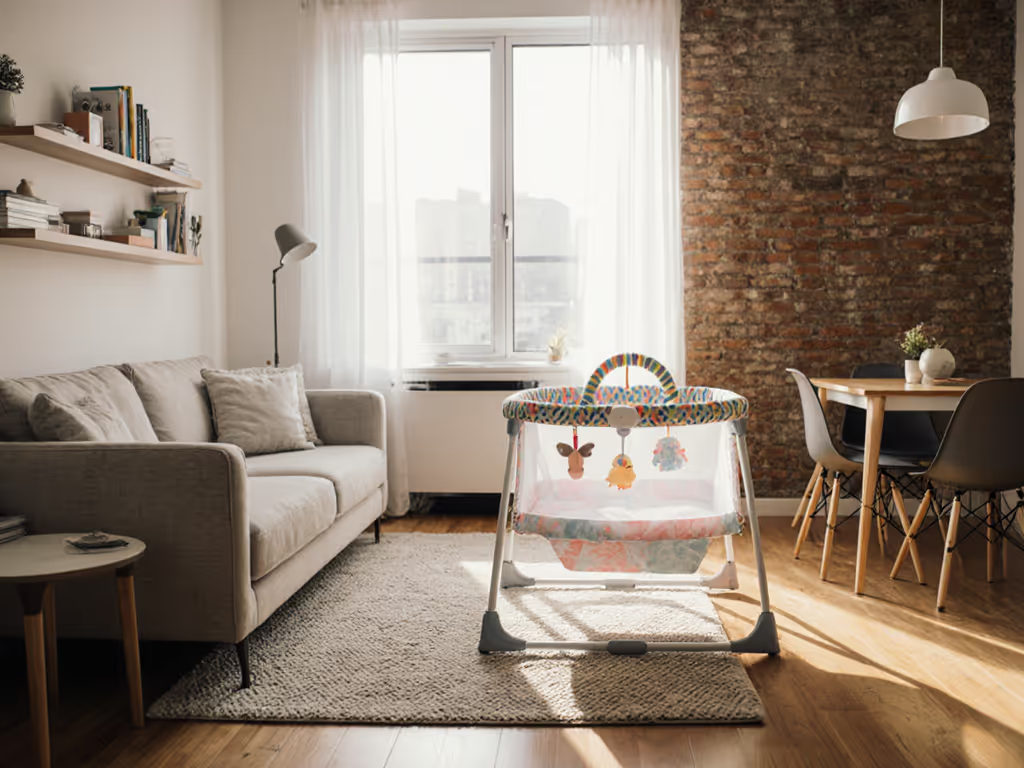
Infant Activity Bouncer Guide: Space-Saving & Safe

When your living room doubles as nursery, bedroom, and Zoom office, choosing the right infant activity bouncer becomes a critical space-planning decision, not just a baby gear purchase. For parents in apartments or townhomes where every square foot counts, this compact seating solution offers hands-free moments without dominating your limited floorplan. But safety must anchor every choice, especially when fatigue blurs judgment. Let's clarify how to integrate an infant bouncer seat into tight spaces while honoring evidence-based routines that protect your newborn. Remember: Safety lives in routines, not marketing claims or modes.
FAQ Deep Dive: Your Urban Space Constraints, Solved
How can an infant activity bouncer actually fit my tiny home?
Urban parents rightly fear bulky gear that becomes a permanent obstacle. The key is prioritizing bouncer seat benefits that align with spatial reality: low-profile bases (under 20" diameter), fold-flat frames, and lightweight construction (<10 lbs). Unlike motorized swings requiring 36" clearance, many infant bouncer rockers deploy in corners beside sofas or under kitchen counters (places you'd never position a traditional swing). During consultations, I've seen clients tuck stable bouncers behind half-walls in studio apartments or slide them under desk nooks during work hours. Measure twice: Your ideal footprint should match a yoga mat (24"x68"), leaving room for movement. Avoid models with wide, fixed bases or dangling toy bars that create visual clutter in minimalist spaces.
"Is it safe?" Beyond the marketing promises
This question echoes most urgently in small homes where baby's gear lives in your living space, not in a dedicated nursery. Critical insight: Safety isn't embedded in the product, it's built into your consistent actions. The CPSC's 2018 federal standard (confirmed by incident data spanning 2006-2016) mandates three non-negotiable practices:
"Use bouncer ONLY on the floor." "ALWAYS use restraints and adjust to fit snugly, even if baby falls asleep." "STOP using bouncer when baby starts trying to sit up..."
Why? Reports showed suffocation when bouncers tipped onto soft surfaces (like adult beds) or babies rolled unrestrained. Infant activity bouncer safety hinges on where and how you use it, not brand names. A low-center-of-gravity model won't tip on hardwood, but will on Persian rugs if placed near furniture edges. Place it near your workstation, yes, but never on sofas, beds, or countertops. Anchor routines, not just products.
How do I handle noise and cleaning in close quarters?
Thin walls amplify frustrations. Prioritize bouncers with:
- Silent mechanics: Springs or mesh bases (not motors) eliminate hums that disrupt Zoom calls or sleeping siblings
- Stain-resistant fabrics: Look for removable, machine-washable covers labeled "quick-dry" (tested to dry in <2 hours)
- Crevice-free frames: Smooth tubes with no fabric folds where spit-up hides
A design-conscious parent in Brooklyn shared her hack: She keeps two covers, one neutral for daytime use, one bright for photos, and swaps them during 15-minute laundry bursts. This aligns with timer-based thinking: assign cleaning slots before messes accumulate. Never let soaked fabric linger; mildew odors travel fast in small spaces.
Will it last beyond newborn stage to justify the space?
Urban parents wisely reject "one-stage-only" gear. Seek infant bouncer rocker features that extend usability:
- Adjustable reclines (for reflux or sleepy newborns)
- Removable newborn inserts (supports tiny spines without bulk)
- Weight limits ≥20 lbs (per CPSC guidelines)
One client converted hers into a toddler "reading seat" by removing the toy bar (proving longevity). But here's the plain-language caveat: No bouncer replaces floor time. Rotate use with tummy time on rugs. The WHO's one-hour positioning limit applies here too. Your routine should include moving baby to safe floor play before fatigue sets in.
When MUST I stop using it? (Critical milestones)
Ignore generic "up to 6 months" claims. Developmental signs override age:
- Rolling attempts: Even partial rolls risk tipping
- Pushing up on hands/knees: Shifts center of gravity
- Reaching 20 lbs: Per federal safety standards
- Sitting unassisted: Indicates readiness to climb out
I recall a parent trembling as she described her 5-month-old nearly escaping a bouncer. Stopping use before these milestones isn't caution, it's compliance with physics. Set phone reminders at 3-month intervals to reassess. If your baby's feet touch the floor when seated, it's time to retire the bouncer. For a full checklist of milestones and transitions, see our when your baby outgrows a bouncer guide. Never modify straps to "make it fit longer."
Actionable Next Step: Your 5-Minute Safety Integration
Space-conscious parenting demands precision. Before your next online order, execute this:
- Measure your smallest room: Identify 24"x24" clear zones (near but not beside seating)
- Check CPSC labels: Verify "Use ONLY on floor" and weight limits match your needs
- Set a timer ritual: Practice short, supervised stints of 15 minutes max, then move baby to floor sleep
- Scan for hazards: Remove cords, plants, or furniture edges within baby's reach
- Verify BSA certification: Search the Baby Safety Alliance Verified Products Directory for independent testing
An infant activity bouncer earns its place in your compact home only when safety routines are non-negotiable. That parent circle whisper I heard? We transformed anxiety into calm by anchoring bouncer time to visible timers and strict floor-sleep transitions. Your space, and sanity, depend not on the product's features, but on the habits you practice daily. Start with one 15-minute routine today: timer set, restraints snug, eyes on baby. That's how safety takes root in small spaces.
Related Articles


Infant Activity Bouncer Safety: Your Routine Guide
Learn evidence-based routines to use an infant bouncer safely in small spaces - hard-floor placement, snug straps, 20-minute supervised sessions, and stopping when baby starts to sit or push up. Keep it off beds, sofas, and counters and never for sleep to reduce suffocation and fall risks.

Infant Activity Bouncer: Developmental Benefits, Small Footprint
Get clear on bouncers’ real, time‑bound developmental benefits and safe usage limits. Use small‑space metrics - compact footprint, under 40 dB noise, and under 90‑second cleaning - to choose a model that won’t disrupt sleep or flow, or skip it entirely.

Infant Activity Centers That Actually Fit Small Spaces
Pick compact, quiet infant bouncers that respect tiny spaces - prioritize fold-flat designs with sub-18x18 footprints, washable covers, and sturdy frames. Use quick storage, cleaning, and resale tests to reduce clutter and maximize value.
